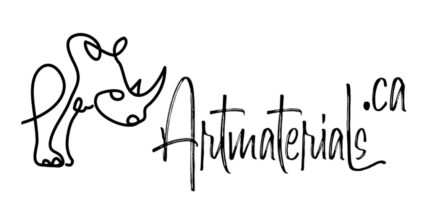- You have no items in your shopping cart
- Continue Shopping

When you paint on canvas, the canvas itself is the first thing to take care of. There is no one best canvas for all the goals as all they have different properties and price, but you can always choose something that fits your goals and budget.
First of all, canvas itself as a fabric. Here we have different options: linen, cotton, polyester and different blends.
Choice here is not straight forward, as always, but generally speaking, the thicker the fabric the more weight it can hold, meaning the more paint and medium you can apply without risk of deformation.
Polyester canvas – when to use?
Polyester or cotton-polyester blends are the cheapest options that you can find even in dollar stores. They are very thin and usually have bigger gaps between threads leading in quality loss. Polyester is technically plastic and can’t absorb anything, meaning sizing and primer may not get a proper binding with the fabric. On top of that this canvas is usually very fragile and rips off easily. So, this kind of canvas is a good choice for children’s paintings, playing with paints or doing exercises and practicing some fast techniques. This kind of canvas is not working for any painting that you want to keep for a longer time.
Cotton or linen canvas?
Cotton and linen canvasses normally is a good choice for professional paintings, provided canvas is thick and properly treated before and after stretching. We’ll talk about that in separate topics. Generally speaking, we’re looking for thick canvas preferably with double thread. That’s something you can check on the back of the canvas (see the pic.).
Double-thread canvas is kind of weaving where one or two threads are doubled. For painting the best option when longitudinal thread is thick and single and weft thread is thin and double. This kind of weaving provides the strongest support, is thick and have smallest gaps between the threads.
Normally linen canvas is thicker than cotton one, and that’s why more expensive. Not all artists can afford painting on linen. But it’s also not always necessary.
If you’re painting in layering techniques and not using heavy paints, a proper-quality cotton canvas is a very good choice. However, for heavy impasto painting linen canvas will provide a better solution as it’s stronger and more durable.
 Fine grained or coarse grained canvas?
Fine grained or coarse grained canvas?
There is no one universal recipe here either. Choice of texture depends on your techniques. If you’re working in fine layering and glazing techniques, the smoother the surface the better. Especially that’s very important for portrait painting. So, fine grain and even extra priming would be the right option here.
For impasto techniques as well as working the involves different pastes, and textures as well as for palette knife painting coarser surface will fit better. The smooth finish is incapable to hold a large amount of paint.
Although, many mediums now can be applied on canvas, we’ll take a closer look at acrylic and oil paint application as the most traditional ones nowadays.
Choosing canvas for acrylic painting
Acrylic paint is quite universal and easy-going, so most of the canvas will work well for acrylic. Choose the material, finish, size and priming that fits your goals for this or that particular painting and enjoy your creative process. Acrylic forms one non-separable layer with primer on canvas, which makes painting process seamless.
Choosing canvas for oil painting
Oil is the most complex medium and requires more skills, knowledge and experience. Here the way how the canvas was treated and primed matters a lot. We’ll have a separate article on this matter too, but for now let’s assume that the canvas is well sized and primed.
Here we have two different kinds of primers that can be used: acrylic or oil. Acrylic primer is universal and can be used for both acrylic and oil. However, to create a better binding with canvas and to prolong the life of finished oil painting (increase time of polymerization) in this case we’d suggest to start the first layer with underpainting that will create a shield between canvas and your actual paintwork.
Acrylic primer normally contains a lot of chalk inside, which is very porous and “drains” oil from painting layer. To prevent this we should create a layer that links acrylic and oil. It should be a painting layer containing gums inside, that “seals” the pores and crates the perfect adhesion for oil paints.
However, based on my experience, the best primer for oil paints is oil primer. As oil priming doesn’t work for acrylic and also takes much longer time for canvas preparation at manufacturers’ side, less and less of them offer this option. Oil primed canvas has a lot of misuse that also forces manufacturers stop making them.
Oil primed canvas should be treated as an oil painting that is standing alone for a long time. That means if you choose oil primed canvas, treat it with retouching medium first for a proper adhesion.
That’s a very basic information regarding choosing canvas for your painting. In Part II we’ll pay attention to other aspects of canvas, such as support for it. You’ll get answers on the following questions: What is the difference in use of stretched canvas and canvas on board? How do proper stretchers look like?
(c) RUSART

 Fine grained or coarse grained canvas?
Fine grained or coarse grained canvas?


